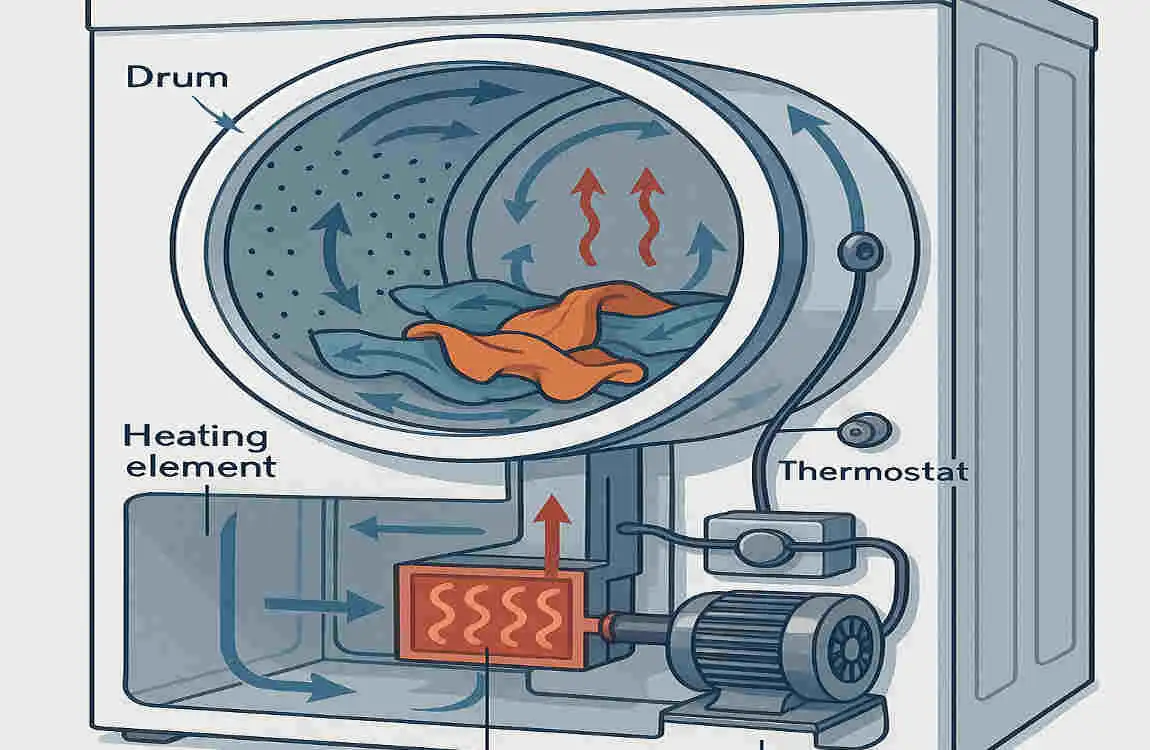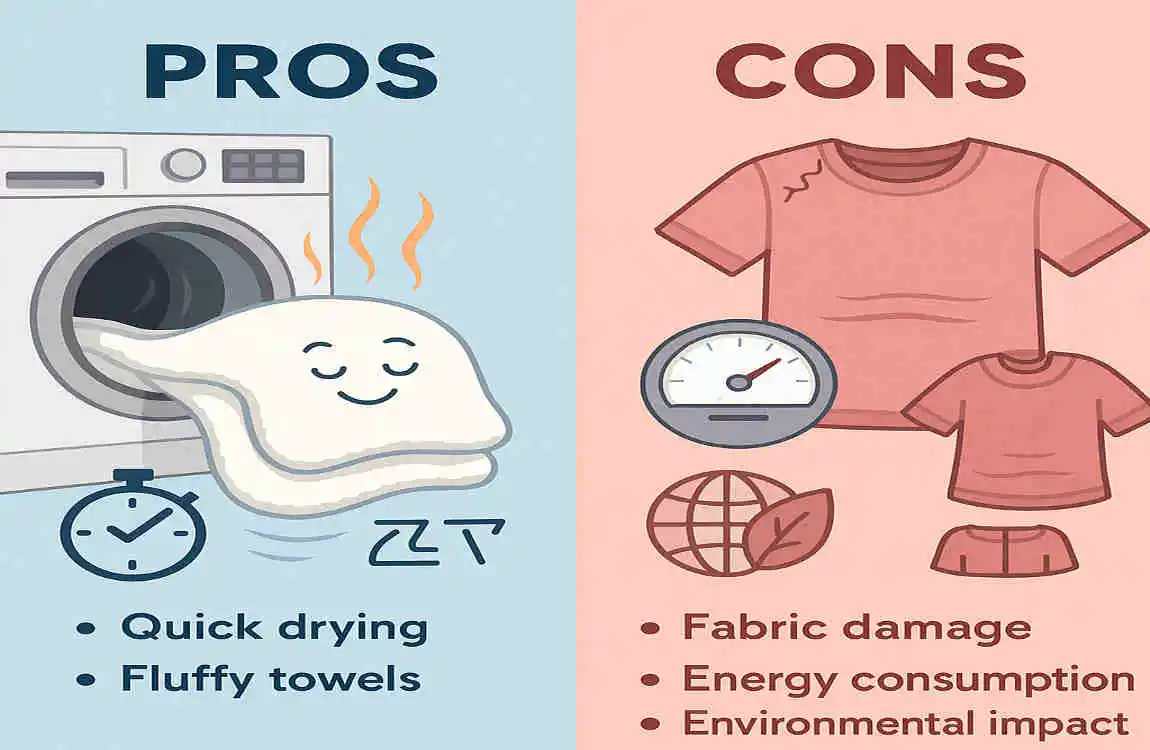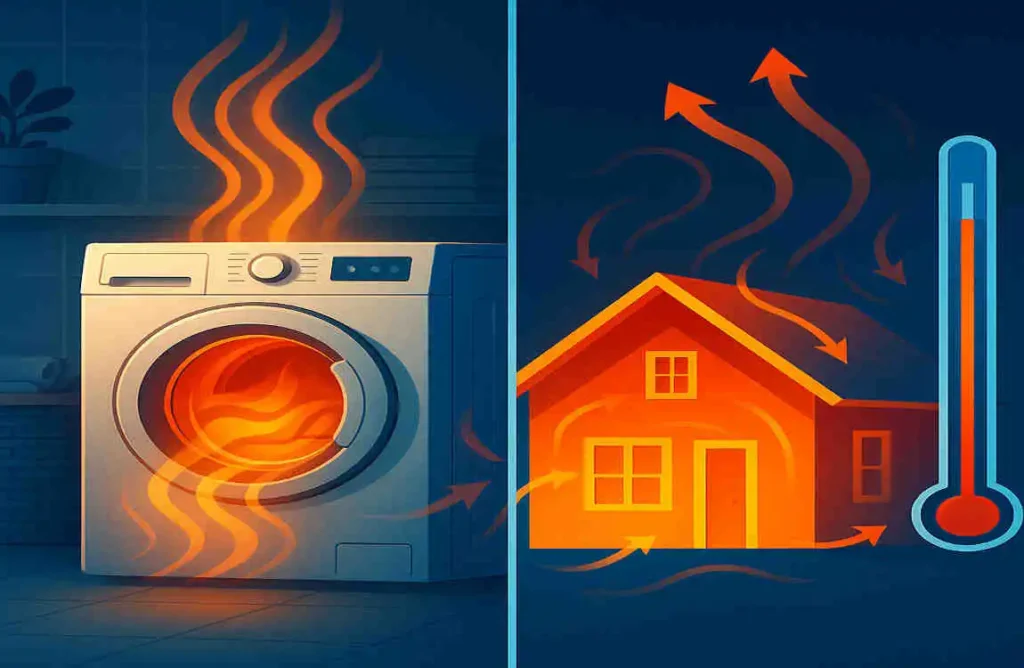Ever wondered why your laundry room feels warmer when you run the dryer? You’re not alone! Many homeowners have noticed this phenomenon and are curious about its causes and implications.
How Does a Dryer Work?

The Basics of a Dryer’s Functionality
Let’s start by understanding how a house dryer works. At its core, a dryer uses a combination of heat, air, and motion to dry your clothes. The heating element, usually located at the bottom or back of the drum, generates heat during the cycle. This heat is then circulated through the drum, evaporating moisture from your clothes.
As the hot air passes through the wet clothes, it absorbs the moisture, turning it into water vapor. The dryer then expels this moist air through the vent, replacing it with fresh, dry air from the room. This continuous cycle of heating, evaporating, and venting is what ultimately dries your laundry.
Types of Dryers and Their Heat Production
Not all dryers are created equal when it comes to heat production. There are two main types of dryers: vented and ventless.
Vented dryers, as the name suggests, expel the moist air outside through a vent. These dryers tend to be more efficient at removing moisture but may not contribute as much heat to your home since the warm air is being pushed outside.
On the other hand, ventless dryers, such as condenser or heat pump dryers, don’t have an external vent. Instead, they collect the moisture in a container or drain it away. These dryers may release more heat into your clean home since the warm air isn’t being expelled outside.
Understanding these differences is crucial when considering whether running the dryer heats up your house.
Does Running the Dryer Heat Up the House?
The Surprising Truth Behind Dryer Heat
So, does running the dryer heat up the house? The answer is yes, but it depends on several factors.
As we mentioned earlier, vented dryers expel warm air outside, which means they may not contribute as much heat to your heating home. However, if your dryer vent is blocked or improperly installed, the warm air may be forced back into your home, increasing the overall temperature.
Ventless dryers, on the other hand, can definitely heat up your house. Since they don’t have an external vent, the warm air they produce is released into your indoor space. This can be particularly noticeable in smaller or poorly ventilated laundry rooms.
Another factor to consider is the placement of your dryer. If your laundry room is small or lacks proper ventilation, the heat from the dryer can quickly build up, making the space feel warmer. In extreme cases, this can even trigger your home’s thermostat to turn on the air conditioning, counteracting the dryer’s heat.
Factors That Impact Dryer Heat in Your Home
What Determines the Amount of Heat Your Dryer Produces?
Several factors can influence how much heat your dryer produces and how it affects your home’s temperature. Let’s take a closer look at each one:
- Size and type of dryer: Larger dryers or those with more powerful heating elements may produce more heat than smaller or less powerful models.
- Ventilation system: A properly vented dryer will expel more heat outside, while a ventless dryer or one with a blocked vent will release more heat into your home.
- Laundry room size and insulation: A smaller, well-insulated laundry room will trap heat more effectively than a larger, poorly insulated space.
- Frequency and duration of dryer use: The more often and longer you run your dryer, the more heat it will contribute to your home.
- Outdoor temperature and seasonal impact: In colder months, the heat from your dryer may be more noticeable and even beneficial, while in warmer months, it can make your home feel uncomfortably warm.
Let’s consider a few scenarios to illustrate how these factors can play out in real life:
- Scenario 1: You have a vented dryer in a large, well-ventilated laundry room. You run the dryer for an hour on a cool winter day. In this case, the heat from the dryer may not significantly impact your home’s temperature since most of it is being expelled outside.
- Scenario 2: You have a ventless dryer in a small, poorly ventilated laundry room. You run the dryer for two hours on a hot summer day. Here, the heat from the dryer can quickly build up, making the laundry room and potentially the rest of your home feel warmer.
As you can see, the answer to “does running the dryer heat up the house?” depends on a combination of factors unique to your specific situation.
Pros and Cons of Dryer Heat

Is Dryer Heat a Problem or a Benefit?
Now that we’ve established that running the dryer can indeed heat up your comfort house, let’s explore the pros and cons of this phenomenon.
Pros of Dryer Heat
- Added warmth in colder months: In the winter, the heat from your dryer can be a welcome addition to your home, helping to keep you cozy without relying solely on your heating system.
- Potential energy savings: If you strategically time your dryer use during colder months, you may be able to reduce your heating costs slightly by leveraging the dryer’s heat output.
Cons of Dryer Heat
- Uncomfortable warmth in summer: In the warmer months, the additional heat from your dryer can make your home feel uncomfortably warm, potentially forcing you to crank up the air conditioning.
- Increased humidity levels: Dryers can also increase the humidity in your home, especially if you have a ventless model. This can lead to mold or mildew growth in poorly ventilated spaces.
- Potential energy inefficiency: If your dryer’s heat is escaping improperly due to poor ventilation or insulation, it could be wasting energy and driving up your utility bills.
To mitigate the cons of dryer heat, consider the following tips:
- Improve ventilation: Ensure your laundry room has proper ventilation to help dissipate the heat and moisture produced by your dryer.
- Use the dryer at cooler times: Run your dryer during the cooler parts of the day, such as early morning or late evening, to minimize its impact on your home’s temperature.
- Invest in an energy-efficient dryer: Newer, energy-efficient dryers may produce less heat and use less energy overall, helping to reduce the impact on your home’s temperature and your utility bills.
Alternative Ways to Dry Clothes Without Heating Up Your Home

Energy-Efficient and Heat-Free Drying Options
If you’re looking for ways to dry your clothes without contributing to the heat in your clean home, there are several alternative options to consider:
- Use a clothesline or drying rack: Hanging your clothes to dry is one of the most energy-efficient and heat-free ways to get the job done. If you have the space and the weather permits, consider setting up a clothesline outside or using a drying rack indoors.
- Invest in a dehumidifier for indoor drying: If you prefer to dry your clothes indoors, a dehumidifier can help speed up the process without adding heat to your home. These devices remove moisture from the air, creating a more favorable environment for drying.
- Choose an air-dry or low-heat setting on your dryer: If you still want to use your dryer, look for an air-dry or low-heat setting. These options use less energy and produce less heat than a standard drying cycle, making them a more eco-friendly choice.
- Explore solar-powered drying solutions: If you live in a sunny climate, consider investing in a solar-powered dryer or clothesline. These innovative solutions harness the power of the sun to dry your clothes, reducing your reliance on electricity and minimizing heat production in your home.
By exploring these alternative drying methods, you can reduce your energy consumption, lower your utility bills, and keep your home cooler and more comfortable year-round.
